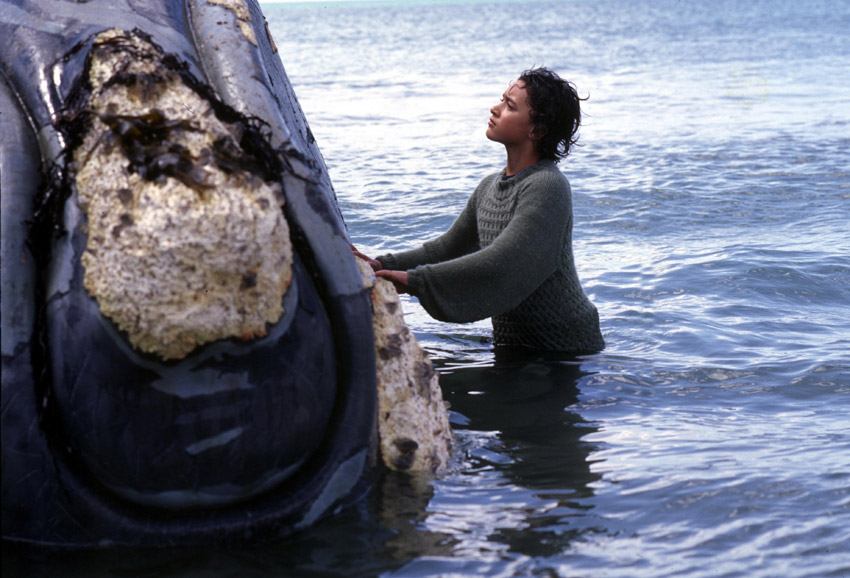The Road Home director, Zhang Yimou, used traditional color meanings along with other forms of symbolism to create depth and beauty in what could have otherwise been a simple, quiet story. Yimou effectively portrayed the main character's emotions through the use of color, and the symbolism of the environment, her actions and the objects surrounding her. Because of the wealth of material this would be to cover, I will be focusing in on color and the environment.
 In the film, the main character, Di, has a case of love at first sight when she first sees the towns new teacher, Luo Changyu. During this first moment, Di is wearing red, a color of luck and happiness. This is a direct connection to the character's euphoric joy at this moment. This first connection takes place during summer; representative of the character's liveliness and energy that brings new joy into her life. After this moment, Di runs home and changes into a pink top, representative of the fact that she is in love and proudly displaying it.
As the film continues, the seasons change- slowly
progressing into fall. The colors of the environment slowly become more
orange and yellow, representative of spontaneity- fitting as Di and
Changyu slowly begin to take to chances of expressing their interest in
each other. When Changyu is being taken to the city due to unclear
circumstances (cultural revolution is inferred), he gives Di a red barrette to
go with the red top he first saw her in. This reflects back to their luck and
happiness in finding each other.
In the film, the main character, Di, has a case of love at first sight when she first sees the towns new teacher, Luo Changyu. During this first moment, Di is wearing red, a color of luck and happiness. This is a direct connection to the character's euphoric joy at this moment. This first connection takes place during summer; representative of the character's liveliness and energy that brings new joy into her life. After this moment, Di runs home and changes into a pink top, representative of the fact that she is in love and proudly displaying it.
As the film continues, the seasons change- slowly
progressing into fall. The colors of the environment slowly become more
orange and yellow, representative of spontaneity- fitting as Di and
Changyu slowly begin to take to chances of expressing their interest in
each other. When Changyu is being taken to the city due to unclear
circumstances (cultural revolution is inferred), he gives Di a red barrette to
go with the red top he first saw her in. This reflects back to their luck and
happiness in finding each other.
As time continues to pass without the return of Changyu, the
seasons change to winter, becoming bleak and white. With this color choice and
the symbolism of the loss of happiness as Di's love is missing with the
uncertainty of return. White is representative of death in Chinese color; in
this instance reflecting the death of Di's happiness in Changyu's absence
rather than the death of a person.
All the while, there are traces of the color red as Di
fights to hold on to her luck and love. The Road Home shows
the visual manifestations of the main character's emotions, creating a vivid
depiction of love, life, and the beauty in memories.
 While recognized for the characters he played, not everyone may realize that the face behind the makeup and effects was the same man putting it on. Lon Chaney Sr. is one of the early pioneers in practical effects makeup. With little guidelines on how to create effects at the time, Chaney experimented; creating harnesses and straps to create the illusion of amputated limbs. He used wires to pull his eyelids open and his nose up in order to create more skull- like features in films such as London After Midnight and The Phantom of the Opera. In The Road to Mandalay (1928), to create the appearance of being blind in one eye, Chaney used thin layer of egg whites like a contact lens. Lon Chaney took risks, combining theatrical makeup with practical effects in order to pave the way in effects as we know them.
While recognized for the characters he played, not everyone may realize that the face behind the makeup and effects was the same man putting it on. Lon Chaney Sr. is one of the early pioneers in practical effects makeup. With little guidelines on how to create effects at the time, Chaney experimented; creating harnesses and straps to create the illusion of amputated limbs. He used wires to pull his eyelids open and his nose up in order to create more skull- like features in films such as London After Midnight and The Phantom of the Opera. In The Road to Mandalay (1928), to create the appearance of being blind in one eye, Chaney used thin layer of egg whites like a contact lens. Lon Chaney took risks, combining theatrical makeup with practical effects in order to pave the way in effects as we know them. 






